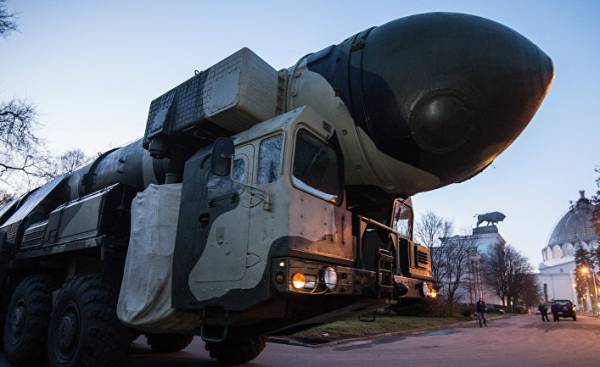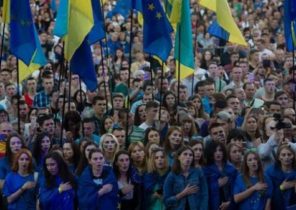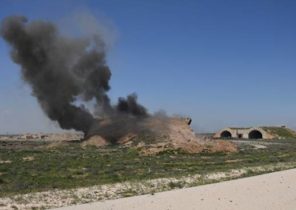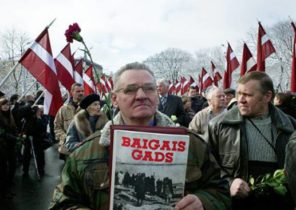
After the Russian annexation of Crimea in early 2014, political and military relations between Russia and the West deteriorated sharply. Of movement, exercises and threats of the Russian armed forces has reduced the level of safety throughout Europe. NATO has responded with increased military presence in Central Europe, strengthening the Kremlin fears about a possible environment. To prevent the threat of an arms race or military confrontation, both sides need to agree on mutual measures for the limitation of military capabilities and engage in arms control.
Of course, Russia and NATO have very different ideas of a peaceful and stable European order in the sphere of security. But it was during the cold war. However, then the two sides have made progress with the tools of arms control, which allowed them to establish relations and reduce the risk of war. Today, there are significant differences between NATO countries regarding the preconditions, the content and format of possible talks with Russia on the subject of arms control.
In August of last year, German foreign Minister Frank-Walter Steinmeier invited all interested European countries to try to “restart” the system of arms control in Europe, which is “tested and proven means of reducing threats, increasing transparency and building trust between Russia and the West.” Such a “structural dialogue”, said Steinmeier, must go beyond existing agreements.
Six weeks later, the United States strongly rejected this proposal, stating that while Russia maintains the current course, “just no reason” for new negotiations on arms control. Instead, believe in US, you need to activate the agreements.
It is quite possible that the German proposal was too ambitious. But the American proposal is not ambitious enough, and (probably more importantly) it ignores the fact that the failure of previous attempts to upgrade the most important agreements such as the Treaty on conventional armed forces in Europe and Treaty on open skies. A more realistic approach than the German, (and more effective than the American) would support these two countries the idea of introducing arms control-style Steinmeier in only one European region — Baltic.
After the annexation of the Crimea by Russia in 2014, increased the mistrust between the Baltic States, NATO and other States in the region, which was particularly vulnerable to conflict. Now NATO needs to strike a balance between, on the one hand, convincing guarantees of containment and security for its members in the Baltic States and Central Europe, on the other hand, the continuation of cooperation and dialogue with Russia. In this sense the Baltic sea region could become a testing ground for policy strategies aimed at mitigating tensions between NATO and Russia.
NATO has always considered deterrence and arms control the two pillars of its strategy of maintaining stability in Europe. For this reason, the reset system of arms control in the Baltic sea region should not affect the current containment mechanisms, including a rotating presence of four battalions of NATO in the Baltic countries and in Poland. The process of negotiations about arms control should not begin with the unilateral reduction of troops.
Instead, this process should begin with structured conversation on topics of concern to the countries of the region. A dialogue is not merely a mild political instrument for the decision of questions in sphere of trade and environmental cooperation; it is important for policy in the field of security, which tries to go beyond deterrence. The goal should be the harmonization of the limitations of military capabilities and measures that will help to create trust.
Arms control relies on transparency. Fortunately, NATO, which is in the Baltic region defensive position with the use of conventional weapons, there are lots of reasons to advocate for transparency. The aggressor appear to be a advantage with disguise and secrecy. These are distinctive features of the “hybrid” war, which so are afraid in the Baltic States, especially after the invasion of Russia on the territory of Ukraine.
Against this background, NATO must begin a new dialogue on arms control with a view to enhancing transparency in terms of military resources that can be used in non-traditional military operations, and to establish a system of early warning about the destabilizing steps that are not in the full sense of the word an act of war. Given the superiority of Russia in conventional forces in the Baltic region, NATO can not worry about the fact that such a process will inevitably lead to a decrease in security in the region. Much less obvious is whether Russia is interested in such dialogue, although the Kremlin probably wanted to mitigate the risk of unintended military escalation.
Commission for deep reductions in nuclear weapons, consisting of American, German and Russian experts in the field of arms control, has recently made specific proposals to address this problem. In particular, the Commission recommends to agree on guarantees of the information about any movement of military units or their teachings. It also proposes measures that will prevent the inadvertent military incidents. Finally, she called on NATO countries to show interest in the Russian proposal to conclude an agreement on activation of aviatransportation, especially during aircraft flights over the Baltic region.
All of these efforts could be supported by the dialogue on military strategies between countries of the Baltic region. Such a dialogue should be conducted by the analytical centres and ideally in the territory of the neutral countries — Finland and Sweden, but not in the official format. As the dialogue about arms control between NATO and Russia, such efforts will enhance mutual trust, without undermining a policy of containment.
Efforts to establish a subregional system of arms control will increase European security in General, becoming part of the work on parameters for a new comprehensive security system in Europe. What has worked in the Baltic region, you can adapt and apply in a broader scale.
Arms control is not a necessity in good times or prize for good behavior. It is a tool of construction or recovery of trust between opponents. For effective implementation, each party must first obtain some insight into the plans and intentions of the other party. In this sense, semi-structured interviews could play an important role. Russian reluctance to get involved in the dialogue to indicate a willingness to resort to military surprises in the future, and thus even the failure of such a dialogue will benefit NATO and the Baltic countries. It’s certainly better than doing nothing.







